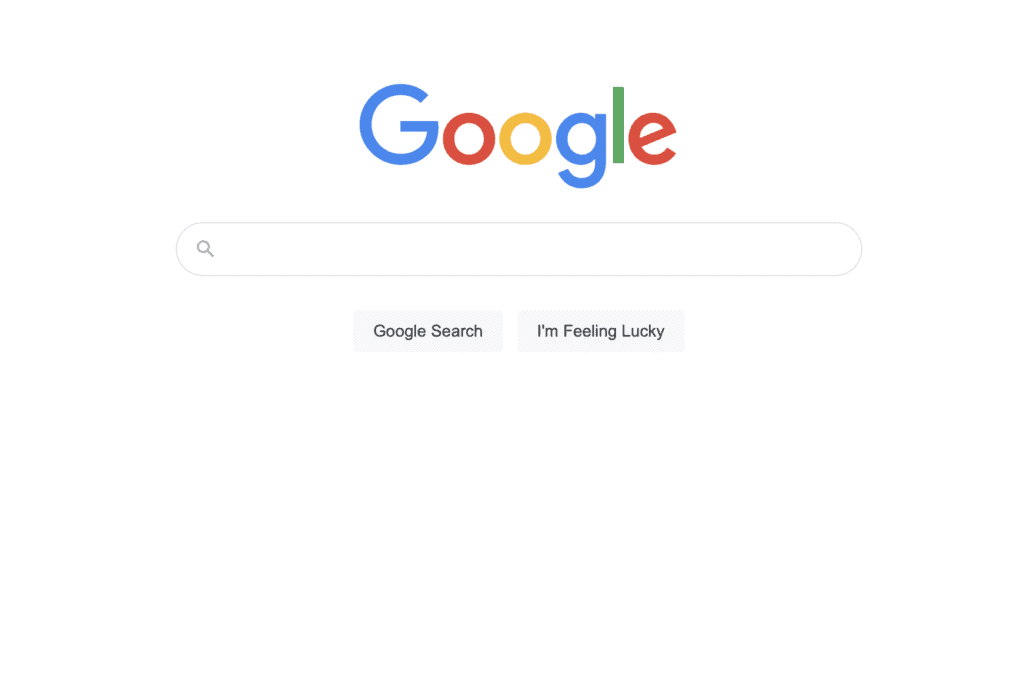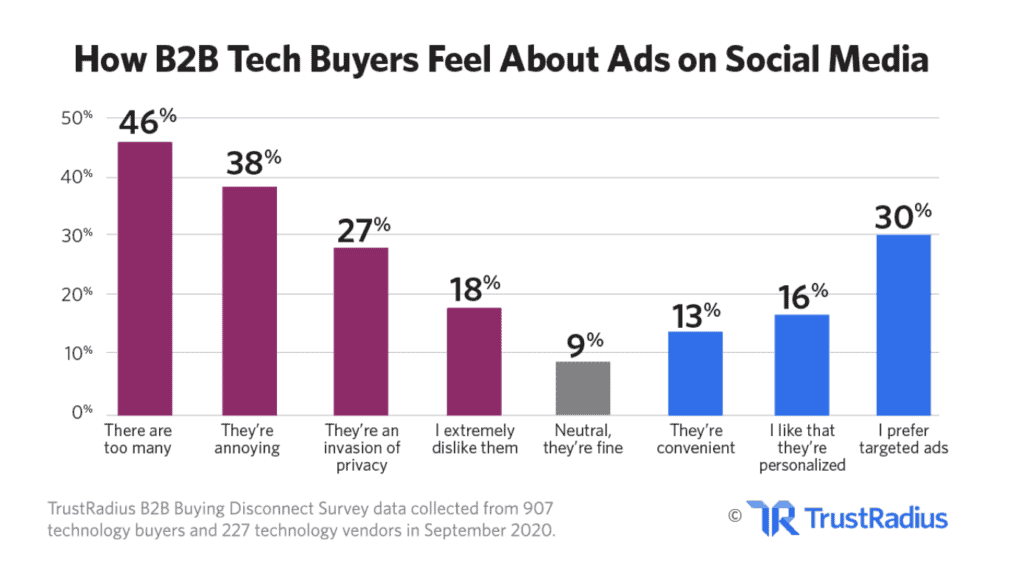Here, we’re going to look at how potential customers learn about new products online, and how you can drum up product awareness for your B2B products.
There are four primary ways that customers typically encounter new products.
- Word of mouth
- Organic search
- Seeing a promotion or ad
- Seeing the product itself (browsing)
So how do you make sure that your product is standing out enough for potential customers to discover it in one of those four ways? Not only that—how do you ensure that you’re making your product discoverable through each of those four ways?
We’ll cover all of that in this guide to creating awareness for your B2B product.
Word of mouth
Word of mouth, or hearing about a product from a friend or colleague, is one of the oldest ways that people discover new products.
Offline, word of mouth looks like a conversation between friends, or a passing comment in a department huddle.
But word of mouth works online, too—in fact, we’d say it works incredibly well and travels incredibly fast.
Word of mouth is based on getting an informed opinion from someone you trust. That’s basically what B2B influencer marketing does.
While B2B hasn’t been as quick to hop on influencer marketing as B2C, the strategy is quickly taking hold in B2B marketing circles and yielding solid results. Better than solid, actually: according to a study by Tomoson, businesses make $6.50 for every $1 spent on influencer marketing.
If you’re just getting started with B2B influencer marketing, make sure you put in the time upfront to find the right influencers for your audience.
Remember, the right influencer won’t necessarily have hundreds of thousands of followers. They just need a small number of highly engaged followers who would be interested in what you’re selling.
Social media is also, essentially, online word of mouth. If you can inspire your followers to talk about your new product, their connections are more likely to seek you out. This is why it pays to have a robust social media presence on the platforms where your audience congregates.
Organic search

It’s a problem every brand faces: how do you get your site to show up within the first five or so search results on Google when people search for a product? Or even: how do you break onto the first page?
The answer involves several different things, but there are two main ways to accomplish this: SEO and B2B PR.
SEO
SEO, or search engine optimization, involves making your website and content as attractive to Google’s algorithm as possible. That means:
- Including relevant keywords in a natural, consistent manner
- Optimizing your metadata (like page titles and descriptions)
- Adding alt-tags to your images and video content
- Consistently publishing relevant, high-quality content.
- Getting backlinks from other, high-authority sites.
B2B PR
PR is a critical tool for raising brand awareness and boosting reputation—especially during the exploration/awareness phase of the customer journey—but it also helps with organic search.
B2B PR results in additional content and backlinks for your brand, which boost your earned media and helps show search engines that you’re an authoritative source. Plus, if you amplify that content, you can get even more mileage out of it, resulting in further mentions and better PR.
Of course, the higher ranked the outlet or publication you’re featured in, the greater the boost to your own organic rankings.
Seeing a promotion or ad
Paid social posts, pay-per-click ads, sponsored content—promotions like these are another way to drum up awareness for your new B2B product.
But before you rush out and put half your budget into paid ads, you should know that B2B buyers, like B2C consumers, are painfully aware of when they’re being sold to—and they don’t appreciate it.
For instance, 46% of B2B tech buyers think there are too many ads on social media, and 38% believe social ads are annoying.

By the same token, influencer marketing campaigns that don’t achieve authenticity, or that relevant to the influencer’s or brand’s audience are almost sure to fall flat.
So how do you get around B2B buyers’ dislike of advertising?
Two ways:
- Retargeting. Retargeting means that when a buyer completes a specific action, like visiting a landing page or another page on your website, they start seeing ads for your brand as they visit other sites across the internet. This strategy has been proven to be effective, with Google reporting that retargeting ads combined with other strategies helps brands sell 50% more products.
- Keep your ads short, highly transparent, and tightly focused. If a B2B buyer is going to click on your ad, they want to be sure it’s going to take them where it says it will. For instance, if your ad is asking people to sign up for a free product demo, it needs to direct those who click to a product demo-specific landing page, not your homepage. And make sure that any paid or sponsored posts are clearly marked as such, so users don’t feel they’re being tricked into clicking on an ad that they thought was regular content.
Seeing the product itself
When you launch a new product, spotlight it on your site so that users see it as soon as they visit.
If you’re doing the rest of your B2B product marketing well, you’ll be driving plenty of traffic to your site. You want to make sure that site visitors come across the new product you’re trying to sell right away, without having to dig for it.
This is also where video product demos, social posts about your new product, and podcasts about your product come into play. Potential customers want to see how your product works, what it can offer them, and how much it costs—and they want all that without having to talk to one of your salespeople.
The more barriers you can remove between your customers and direct interaction with your product, the better. If you’re selling online, like the vast majority of B2B brands, then video content, combined with self-serve purchasing options, is the best way to do this.
Growing awareness about a new product requires targeted efforts around the product (ads and social media, mainly) broader marketing tactics around brand-building and reputation boosting (B2B PR). By combining these two approaches, you can get your product off the ground and into the hands—or computers—of the B2B buyers who matter.
Need help? Get in touch with Zen’s expert team today!





